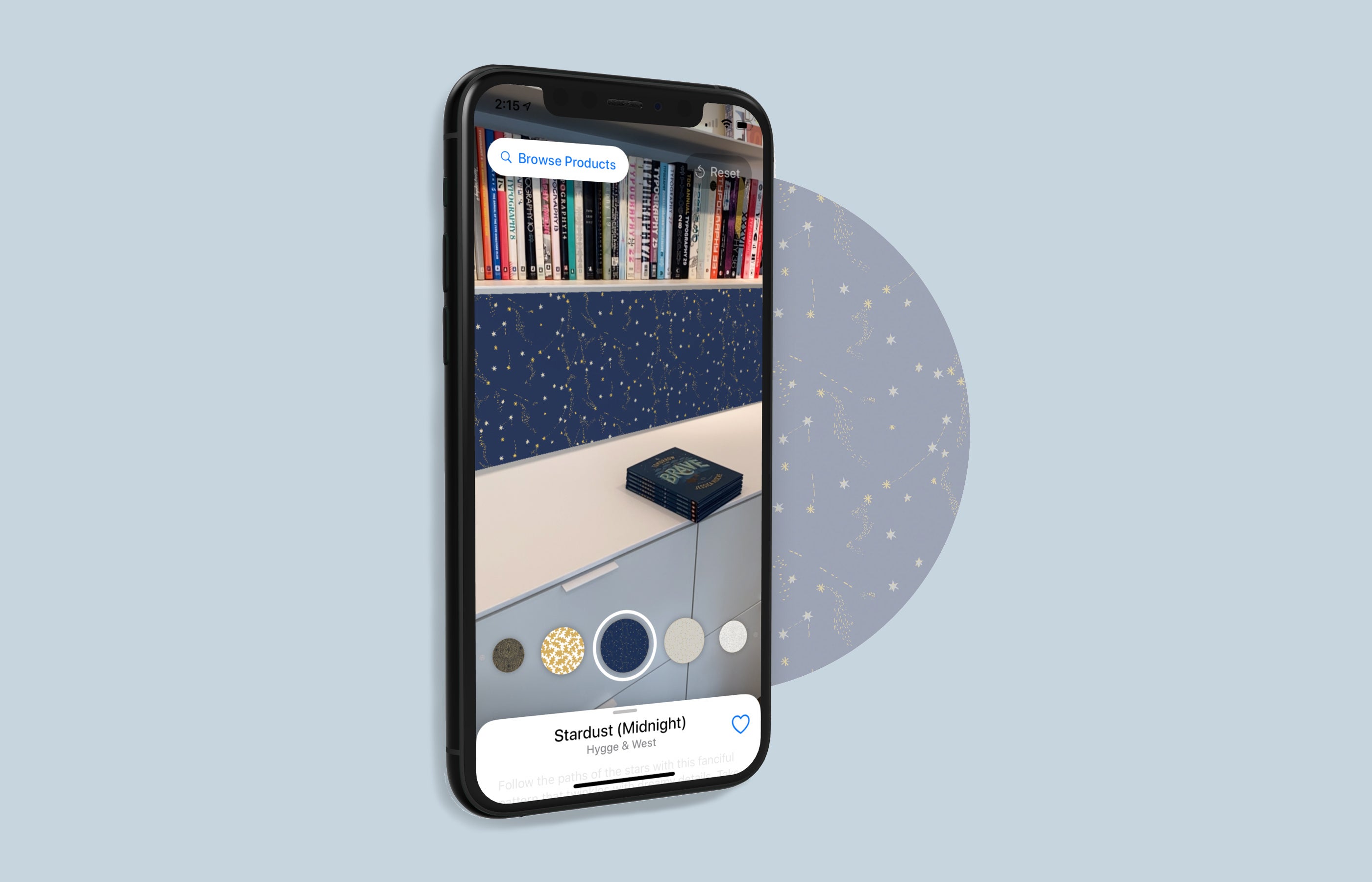There’s no shortage of augmented reality technology in the furniture industry. Every major retailer, from Macy’s to Ikea, has some AR that allows customers to see what a piece of furniture would look like in their home. But when it comes to AR and walls, the space is as bare as a newly rented apartment.
It was that gap in the market that attracted Adam Debreczeni and Russ Maschmeyer—a pair of tech entrepreneurs whose resumes include stints at Google and Facebook—to found Primer, an AR app dedicated to showing users options for flat design elements like wallpaper, tile and paint. “There’s so little on offer right now for these kinds of technology and architectural materials,” says Maschmeyer, who is also the company’s CEO. “We saw that as an amazing place to start.”
The app works similarly to many AR programs, using a phone’s camera to scan the room. To place a product in your space, you walk up to the chosen wall and gently tap the tip of your phone against it. The gesture informs the app where you want the product to go. The platform will work around things like existing furniture or wall hangings and can even recognize when, say, a backsplash would end and a countertop would begin. It also responds to different types of lighting in a realistic way, so if you’re looking at a paint color in the morning versus the evening, the in-app view of the new hue will look subtly different, just as it would on your walls. It will also include things like natural shadows or patches of window light, giving the user a hyperrealistic look at the finishes.
When it launches on April 14, Primer will offer users a chance to test out products from Farrow & Ball, Hygge & West, Clé Tile, Kate Zaremba and Elworthy Studio. “We want to work with partners who understand that the way people think about their homes is evolving and that newer platforms will allow them to prosper,” says Maschmeyer. “Businesses that have a good following on Pinterest and Instagram are more likely to understand this next generation of home buyers. So, we approached brands that seemed to be open to embracing a new way of doing things.”
As the app will be free for consumers, Primer is charging partner brands through subscription and modeling fees. They offer a free tier to brands who only want to host a few SKUs, but to host a full range of products, you have to buy in. If users decide to buy the product after testing it out, Primer will redirect to the brand’s site, where they can make a purchase directly. “A lot of these brands spend a huge amount of money sending samples or providing complimentary services before people have made a significant purchase,” says Maschmeyer. “We realized this was something obvious that we could do for those brands to make it easy when you have a new product—we can very quickly upload it to the platform and get it in front of consumers.”
While he wants Primer to appeal to the masses, Maschmeyer is keenly aware of how this tool could benefit the design trade. “We’ve been chatting with interior designers and hear that the existing tools for demonstrating ideas to clients are not super rich.” He acknowledges that some designers are investing in high-resolution, 3-D renderings, but those assets can take a lot of lead time—not to mention that the more realistic rendering services can come with a hefty price tag. “This allows them to work in person or have their client play with this technology remotely and see all the options in a tangible, quick way.”
In catering to designers, Maschmeyer hopes to eventually pinpoint a way to host trade brands on the app, though the concept poses some logistical challenges. There is presently no exclusive portion of the app where designers can log in to access trade-only products.
Looking ahead, Debreczeni and Maschmeyer plan to expand Primer’s offerings to flooring and window treatments, and eventually circle back to furniture. “We see a lot of value in having a software experience that really understands your home,” says Debreczeni. “If you have your device and you’re looking through it, that software should be able to understand if you have a pink sofa from West Elm and then tell you what paint color from Farrow & Ball would pair well with it. That’s where I think we’ll be in a year or two. What we’re launching now is just the first part of a very long-term goal. In a few years, we’d like to be in a place where people think of Primer when they buy an apartment or move into a new home.”





























